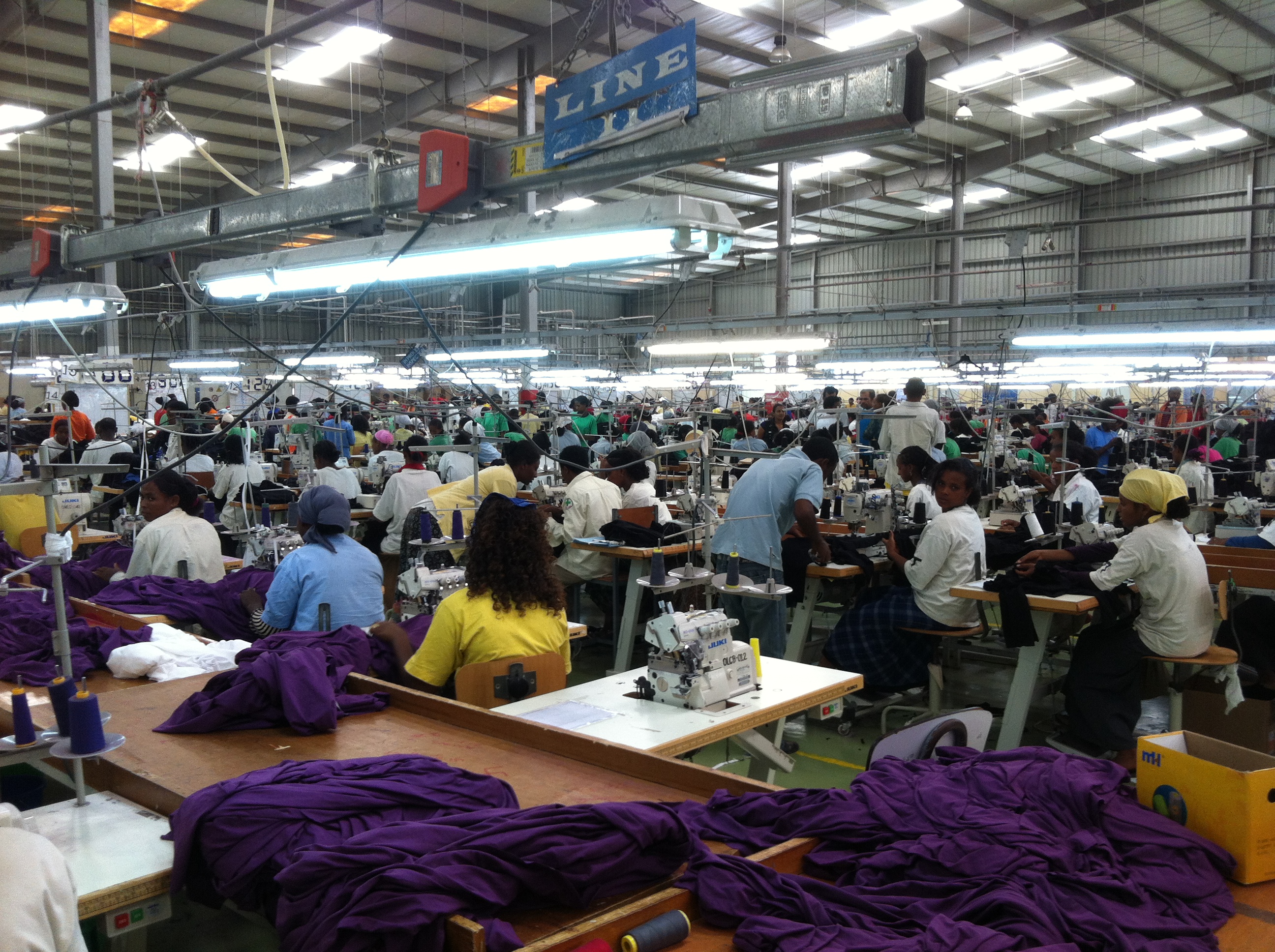Every now and then, we remember that there are poor people in the world, and sweatshops become news. Jonah Peretti — the click-accumulating mastermind behind The Huffington Post and BuzzFeed — got his start in viral journalism 15 years ago by baiting Nike with a chain of witty emails requesting that his personalisable Nike trainers be emblazoned with the word SWEATSHOP.
Peretti having moved on to grander projects, the stage storyteller Mike Daisey picked up the baton, delivering a riveting monologue, “The Agony and Ecstasy of Steve Jobs”. It was about Daisey’s heroic unmasking of appalling working conditions in the Chinese factories that make iPads. It made compelling radio when This American Life aired it in 2012. It was even more compelling when This American Life retracted the episode shortly afterwards. Ira Glass, the show’s host, wrote: “Daisey lied to me.”
Economics, of course, offers a less click-worthy perspective. We shouldn’t be surprised if people making sneakers and iPads are paid badly to do tough, hazardous work, because they live in countries where such work is everywhere. And since people are moving away from grinding and precarious rural poverty to work in these grim factories, perhaps they see them as an improvement? The pithiest account of this view comes from the great 20th-century Cambridge economist Joan Robinson: “The misery of being exploited by capitalists is nothing compared to the misery of not being exploited at all.
That’s Tim Harford in the FT, beginning his discussion of my sweatshops study with Stefan Dercon. In case FT is gated, I’ve got a short results summary and of course an academic paper.
The short answer: young people are using these jobs as fallback positions when their better but less formal opportunities don’t work out. But these jobs carried big health risks, so much so that for every month in a job, 1 in 100 complained about a serious health problem, even months after most had quit the unpleasant work.


7 Responses
Peretti having moved on to grander projects, the stage storyteller Mike Daisey picked up the baton, delivering a riveting monologue,
golu dolls
golu dolls
Your findings are very interesting, but in light of ongoing discussions about external validity, I think it would be better if you reported the findings you actually made in your specific context, and allow it to the reader to judge external validity.
In that case, your punchline would have been:
“The short answer: young people [in these five Ethiopian factories that we were studying] are using these [entry-level] jobs as fallback positions when their better but less formal opportunities don’t work out.”
Once you frame it in the local context, it is still an interesting result, but draws attention to external validity. In particular, it would make me wary of using the title of your post, which suggests a general equilibrium interpretation to your results, which you correctly acknowledge in your paper is not possible (and which according to Econ 101-logic actually should be the only effect of sweatshops).
Just wondering if you looked into the effects of a consistent sweatshop salary on personal/family health and ability to afford healthcare (hospital visits, cash to purchase medicines, changes in diet/nutrition, better drinking water).
If so was the negative health effect from working in poor conditions offset by the reliable income gain and ability to access marginally better healthcare for an individual and their family?
This is not a terribly helpful way to frame the discussion. Do low-wage industrial jobs have to entail choosing the possibility of serious health problems for workers?
The choice does not have to be between dangerous work or no work at all. The choice is to what extent manufacturers are willing to accept dents in profits to provide minimum health and safety standards in their factories, or those of subcontractors. There’s still a great deal of room for Western nations to penalize companies which violate those standards.
That’s not really true. Let’s take china as an example. One product isn’t manufactured in just one factory. Factories are rather small, and a single product could involve quite a few factories. Chinese liaisons will not take the American manufacturing company to these real factories. They will take them to a clean, modern looking factory front that represents the other factories. American manufacturers rarely see their real factories. In order to actually police their factories, it would take a lot of work. Let’s assume that a manufacturer did in fact go to china, check up on all their factories and insist that they have American standard health codes and work procedures. This particular manufacturer’s prices would go up high enough to the point where another company could decide to make an exact copy of their product for significantly cheaper because they wouldn’t spend money on the the regulations that our fictional American manufacturer did. The price point of the real product would not be able to compete with the fakes.
It is the same process we saw in England during the early years of the Industrial Revolution. People only went into the factories as a last resort. In the factory I work with in Kenya nearly every worker expresses to me a desire to do something else. Some even have college degrees. But that something else remains elusive so they take the best of what they can get.
I’ve been to many “sweat-shops”. The last time I was in China, I visited one of the sweat shops where Ty beanie babies were being made. A girl working the line got a phone call informing her that her husband had fallen off of a building during construction. I already knew that the factory jobs could change a family’s life, but hearing about the danger of construction (or rather being reminded as I myself have seen a Chinese factory worker fall off of a building) compared to the factory, really put it into perspective. We can’t compare our 1st world working standards to the 3rd world. We just can’t.